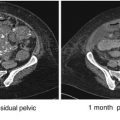© Springer International Publishing Switzerland 2017
Eric Pujade-Lauraine, Isabelle Ray-Coquard and Fabrice Lécuru (eds.)Ovarian Cancers10.1007/978-3-319-32110-3_1414. Clear Cell Carcinoma
(1)
Department of Clinical Oncology, National Defense Medical College Hospital, 3-2 Namiki, Tokorozawa Saitama, 359-8513, Japan
(2)
Department of Obstetrics and Gynecology, Dokkyo Medical University Koshigaya Hospital, 2-1-5-Minamikoshigaya, Koshigaya Saitama, 343-8555, Japan
(3)
Department of Gynecologic Oncology, Saitama Medical University International Medical Center, 1397-1 Yamane, Hidaka-city Saitama, 350-1298, Japan
Abstract
Clear cell carcinoma (CCC) is a unique entity of adenocarcinoma of the ovary. In this chapter, we discuss the clinicopathological and molecular biological characteristics of CCC. The results of clinical trials conducted in the past strongly imply the chemoresistance of CCC, and clinical trials using targeted agents are ongoing.
Introduction
Clear cell carcinoma of the ovary (CCC) was first described as “mesonephroma ovarii” by Schiller in 1939. The tumor cell of CCC resembled renal cell carcinoma, and it was believed to be originated from mesonephric structure. In 1973, CCC was strictly classified as a histological subtype in ovarian cancers by the World Health Organization classification. Pathological features of CCC are characterized by clear cells growing in solid/tubular or glandular patterns as well as hobnail cells. There have been many publications that suggested distinctive clinical behavior of CCC, such as platinum-resistant phenotype, and worse prognosis in comparison with other histological subtypes [1–3]. However, until now, the treatment modality for CCC has been the same as other subtypes of ovarian cancers. The characteristics of CCC are described in this chapter, including clinical and molecular characteristics of the tumor.
Clinical Characteristics of CCC
Association with Endometriosis and Prognostic Factor in Early-Staged Disease
Recently, a marked ethnic difference of has been recognized in the incidence of CCC, although the reason for this difference is not clear [2]. The incidence of CCC is less than 10 % in Europe and North America [4]. However, in Japan, the prevalence of CCC is increasing, and now approximately 25 % of epithelial ovarian cancer is CCC according to the Japan Society of Obstetrics and Gynecology tumor registry in 2014.
Association with endometriosis and neoplastic tumor is often reported in CCC and endometrioid adenocarcinoma of the ovary. Recently, both atypical endometriosis and atypical adenofibroma of the ovary have been considered as precancerous lesions [5, 6]. The ovarian cancer risk was significantly elevated in the patients with endometrioma of the ovary (relative risk = 12.4) [5]. The risk increased significantly when the patients were diagnosed at elder age, especially over the age of fifties, suggesting that malignant change of endometriosis occurs near menopause stage. K-ras mutation was recognized as one of the triggers of malignant change of endometriosis [7]. Additionally, PTEN mutations are also frequently observed (27.3 %) in CCC, suggesting them to be carcinogenesis-related genetic changes [8]. On the other hand, unlike high-grade serous (HGS) tumors, CCC are generally p53 wild type and have a lower frequency of BRCA 1 and BRCA 2 mutations [9].
Most of CCC tumors are unilateral, and the mean size of CCC is approximately 15 cm. Additionally, CCC is frequently diagnosed at early-staged disease, and the proportion of stage I/II tumors was reported to be about 60 % of all staged CCC [9, 10]. In stage I ovarian cancer of all histological subtypes, the incidence of lymph node metastasis was reported to range from 5.1 to 20 % [11–13]. On the other hand, serous ovarian cancers had a higher incidence of lymph node metastasis than non-serous tumors [14]. A study of a large number of clear cell carcinomas revealed lymph node metastasis was observed in 9.1 % in stage Ia tumors, 7.1 % in stage Ic tumors, and 10.8 % in pT2 tumors [9]. Approximately, 10 % of clinical stage I/II tumors would be upstaged as stage IIICA 1 [9] based on lymph node status.
The incidence of thromboembolic complications in CCC, such as deep venous thrombosis and pulmonary embolism, is reported to be higher than other epithelial ovarian cancers (16.9–27.3 % vs. 0–6.8 %) and is considered as an independent prognostic factor [5, 6].
Impact of retroperitoneal lymph node status on prognosis in early-staged ovarian cancer patients is still controversial. Some retrospective reports showed positive relationship: survival rates with node-positive disease were significantly lower in clinical stage I and II disease [11]. In contrast, another report showed that the prognoses for clinical stage I/II patients with or without lymph node metastasis were similar [15]. However, in patients with clinical stage I CCC, lymph node involvement was identified as a stronger prognostic factor [9]. It is suggested that it is important to evaluate the lymph node status through complete surgical staging procedures in CCC patients. Also, complete resection with no macroscopic residual tumors could be often achievable in CCC. On the other hand, serous cystadenocarcinoma patients often present at advanced-stage tumors and harbor measurable disease after initial cytoreductive surgery [2].
Fertility-sparing surgery (FSS) is generally accepted in ovarian cancer patients with stage IA and grade 1/2 histology. CCC is regarded as grade 3 tumors, and FSS is not recommended even when the patient had Stage IA CCC disease. A multi-institutional retrospective study revealed that recurrence was documented in no case in 15 cases with stage IA CCC tumors and 4 cases (27 %) in stage IC CCC disease, suggesting that FSS could be an optional surgical technique in stage IA CCC cases [16]. Another observational study reported that recurrence was observed in a case (4 %) in 23 stage IA CCC and 6 cases (26 %) in stage IC CCC, respectively, and concluded that stage IA CCC patients might be treated with FSS [17]. Although further analyses are needed, FSS can be an optional treatment at least in stage IA CCC cases.
The impact of peritoneal cytology in stage I ovarian cancers still remain undetermined. A recent report showed no statistical significant difference between stages Ic preoperative versus intraoperative rupture by analyzing prognosis of 94 carcinoma cases including 25 CCC cases (26.6 %) [18]. But another report including higher ratio of CCC patients showed that stage Ic intraoperative rupture patients showed significantly poorer survival than stage Ia patients [19]. The impact of peritoneal cytology was confirmed in a study analyzing CCC cases only; tumor progression was observed in 11 % of stage Ic intraoperative rupture tumors and 3 % of stage Ia tumors [9]. These results implied the importance to remove ovarian tumor mass without intraoperative rupture and implantation of tumor cells, especially in clear cell carcinoma patients. Progression-free survival of the patients with stage Ic (ascites/malignant washing) and Ic (ovarian surface) was significantly worse than that of stage Ic (capsule ruptured) (p = 0.04) [9]. These results suggested that positive peritoneal cytology could be related with microscopic implantation of CCC cells which potentially harbored resistant clones for anticancer agent drugs, and these diagnoses would lead to early relapse of the disease despite postoperative chemotherapy.
Response to Platinum-Based Therapy and Prognosis of CCC and Prognostic Factor for Advanced-Stage CCC
Several publications with relatively small sample number have identified that CCC often showed resistance to platinum-based chemotherapy, and the response rate of primary therapy was extremely lower in CCC compared with serous adenocarcinomas [1, 2]. The response rate by combination therapy with paclitaxel and carboplatin was also lower, ranging from 18 to 56 %, reported by Enomoto at ASCO 2003. Although there is no larger phase II study confirming these results, clear cell carcinoma clearly showed resistance to paclitaxel and platinum as well as conventional platinum-based chemotherapy.
From a large retrospective cooperative study, 5-year progression-free survival and overall survival was 84 % and 88 % in stage I, 57 % and 70 % in stage II, 25 % and 33 % in stage III, and 0 % and 0 % in stage IV, respectively [9]. In advanced ovarian tumors, it is well known that optimal surgery achieving residual tumor diameter less than 1 cm improved survival of the patients. Since 1986, the Gynecologic Oncology Group (GOG) has used the definition, “less than 1 cm,” in GOG studies [1]. In the analysis of CCC-specific cases, median progression-free survival duration was 39 months in the patients with no residual tumor, 7 months in those with the tumor diameter <1 cm, and 5 months in those with residual tumor diameter >1 cm, respectively [9]. Only the patients with complete resection could achieve a longer survival in advanced-stage cases. From these results, it is suggested that cytoreductive surgery achieving no residual tumor could only improve the prognosis of advanced CCC. “Optimal” cytoreduction in CCC had better be defined as “no residual tumor.”
Adjuvant Radiotherapy for CCC
Postoperative whole abdominal radiotherapy (WAR) had been generally used for ovarian cancer patients for many years since 1970s [20]. However, many gynecologists changed postoperative radiotherapy to platinum-based chemotherapy, although there was no randomized clinical trial to compare WAR with chemotherapy. So far, there are a few centers around the world that performed postoperative WAR for ovarian cancers. A historical-control study revealed that overall survival and disease-free survival of CCC patients that received postoperative WAR were significantly better compared with those that treated with platinum-based chemotherapy [21]. Additionally, a report including a large number of CCC cases that received radiotherapy revealed that radiation therapy achieved almost similar disease-free survival compared with Japanese cohorts that mainly treated with chemotherapy [22]. Additionally, it was suggested that radiotherapy was more effective than chemotherapy in a subset of patients with stage IC 2/3 and stage II disease. As a relative lack of efficacy of chemotherapy has been well-known in CCC, potential benefit of radiotherapy would be further evaluated in clinical trials.
Molecular Pathology of CCC
There are many publications describing molecular markers highly expressed in CCC compared with other histology. Mutation in p53 is much less frequent in clear cell carcinoma than in other histological types of epithelial ovarian cancers, suggesting that there is another carcinogenesis mechanism in the development of clear cell carcinoma [23]. Wilms’ tumor suppressor 1 gene (WT1) and WT1-antisense promoter were significantly methylated in CCC (88.2 %) compared with serous adenocarcinoma (24 %) [24]. Multidrug resistance protein 3 (MRP3), a well-known resistance marker to anticancer drug, is also highly expressed in CCC [25]. Also, hepatocyte nuclear factor 1beta (HNF-1beta) is highly expressed and has anti-apoptotic effects in clear cell carcinoma [26]. Gain of 17q21-q24 and consequent overexpression of two potential targets, PPM1D and APPBP2, are associated with malignant phenotypes of CCC, and these markers were reported as a predictor for prognosis [27]. More recently, frequent alteration of ARID1A [28] and PIK3CA [29] has been reported. Mutation of ARID1A was observed in approximately half of all cases with CCC, and PIK3Ca mutation was detected in about 40 % of CCC cases, respectively. Gene expression analysis revealed that CCC showed a specific expression pattern compared with other subtypes of ovarian cancers [30]. These genetic background combined with cell growth activity could be correlated with the distinct behavior of clear cell carcinoma. Suppression of the genes as shown above or acceleration of cell cycle might be a useful strategy for the future treatment of clear cell carcinoma of the ovary.
Stay updated, free articles. Join our Telegram channel

Full access? Get Clinical Tree





